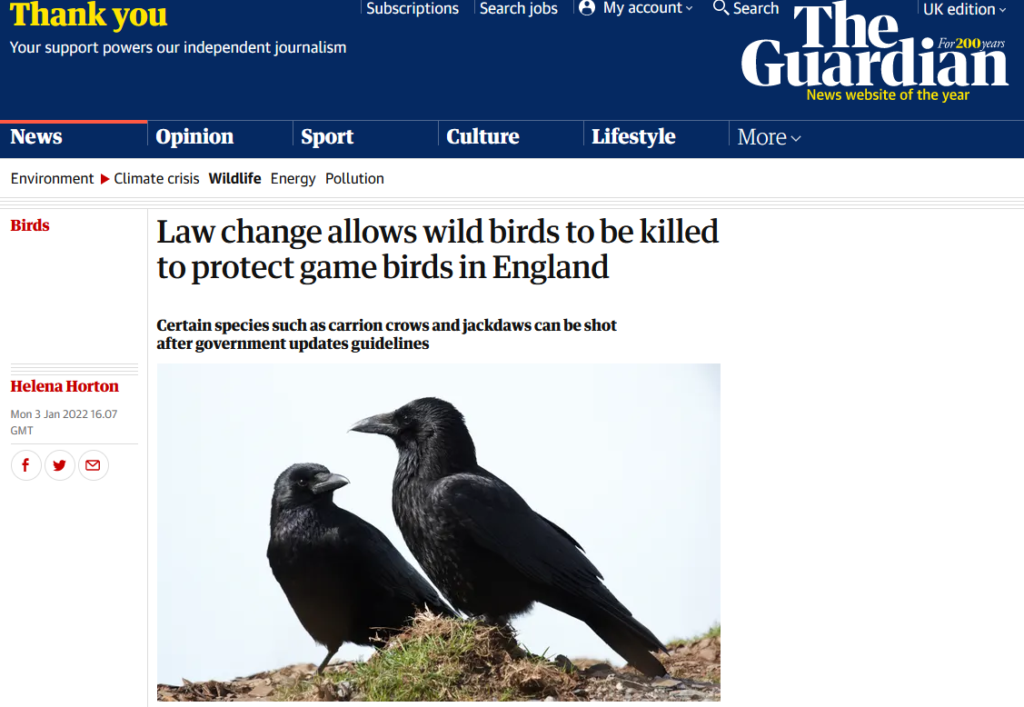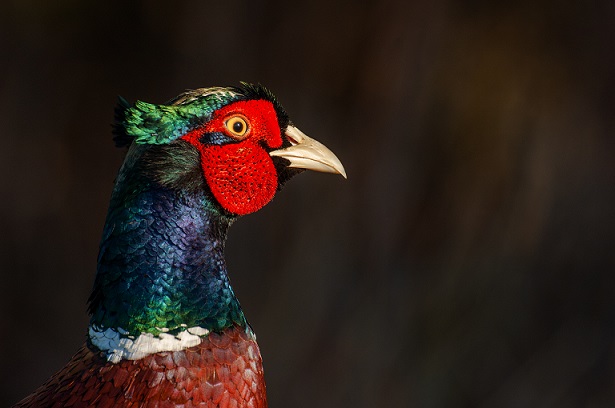General licence confusion continues – Schrodinger’s Pheasant

Yesterday this piece appeared in the Guardian online – we guess it will be in today’s print edition.
The story relates to the new general licences for England, which are very largely unchanged from last year’s licences. These are the licences, not just in England but across the UK, that Wild Justice has caused to be reformed since our original legal challenge back in spring 2019.
The law hasn’t changed, despite the Guardian headline; what has changed (back to a previous version) is the wording of the conditions of the licences. And they have changed to being two-year licences rather than annual ones. Talking of changes, it’s good to see that the Guardian has changed their original image of two Rooks to one of two Carrion Crows – Rooks are not really predators of gamebirds at any stage of the gamebirds’ lives.
Pheasants and Red-legged Partridges (RLPs) are not native UK species. RLPs are native to Europe but Pheasants are primarily Asian species. The reason that Pheasants are common sights in the countryside is that 51 million of them are reared in captivity and released into the countyside in summer for shooting in autumn/winter (see a previous blog here). They may not be native but they are certainly beautiful.

So, Pheasants and RLPs are ‘livestock’ when they are being hatched and reared in captivity – there’s no doubt about that – they are just like chickens. The captive-reared birds are then transferred into the countryside to release pens from which they are, you guessed it, released in July-September ahead of the shooting season (starts 1 September for RLPs and 1 October for Pheasants). Are they livestock then? Well, we think they probably are, but in very large pens without roofs are they really in captivity because some time in this period they will become able to fly. What the Guardian piece refers to is the situation after the birds are ‘released’ and they are free to roam the countryside – are they still livestock then? Well, at some stage they become wild birds and they are out of the control of their ‘owners’. How do you recognise this transition? In Wild Justice we refer to this dilemma as Schrodinger’s Pheasant – can a Pheasant which occasionally nips back to a release pen to have a look around but spends most of its time dodging Foxes and cars still be livestock?
Once a Pheasant or RLP is a wild bird then it is unlawful to kill bird species listed on the general licences to protect them – because they are simply wild birds (that’s the law). In fact, this is perhaps an interesting dilemma but an almost entirely pointless discussion because well-grown Pheasants (and RLPs) are not predated by any of the species listed on the general licences – they are too big for species like Carrion Crow to tackle. They aren’t called Carrion Crows for nothing.
Wild Justice is very interested in DEFRA’s definition and we have explored this issue with them before. We will take legal advice again. If any old Pheasant wandering around the countryside is livestock when it suits shooting interests then it may be livestock when it doesn’t suit them. Pheasants cause many road traffic accidents each year, including some of human fatalities – do shooting organisations really want their members to be liable for insurance claims because their livestock are running wild? How about the many, many gardens that are visited by large numbers of released gamebirds which damage vegetables and flowers? It seems to us, but we will seek advice, that there are quite considerable disbenefits to shooting interests of the route down which DEFRA has gone (we’re guessing at the behest of shooting organisations).
Watch this space.
